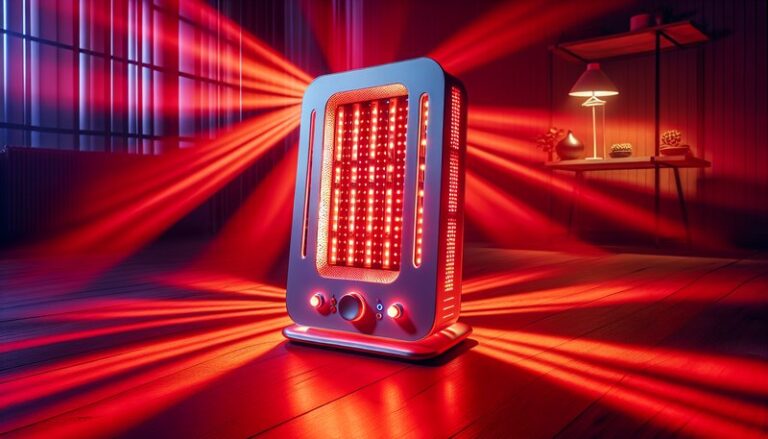Does Infrared Red Light Therapy Work?
Does Infrared Red Light Therapy Work?
Have you ever wondered if infrared red light therapy is a fad or a legitimate treatment option for various health issues?
This article aims to explore the effectiveness of infrared red light therapy, addressing its definition, benefits, considerations, and alternatives. We will also answer frequently asked questions to provide a well-rounded understanding of this popular therapy.
Key Takeaways
- Infrared red light therapy has been shown to offer potential benefits such as pain relief and improved skin health.
- The therapy is non-invasive and can complement other treatments.
- Important considerations include safety measures, treatment duration, and consultation with healthcare professionals.
What is Infrared Red Light Therapy?
Infrared red light therapy (IR therapy) uses specific wavelengths of light to penetrate the skin and target various tissues in the body. This form of therapy utilizes low-level lasers or light-emitting diodes (LEDs) and is often employed for pain management, wound healing, and skin rejuvenation.
The therapy works by stimulating cellular processes, increasing blood flow, and enhancing the body’s natural healing mechanisms. It is often used in physical therapy settings, wellness clinics, and increasingly at home via various devices designed for consumer use.
How Does Infrared Red Light Therapy Work?
The light employed in infrared therapy penetrates the skin at varying depths, promoting better circulation and cellular function. This process leads to a range of physiological responses that can help alleviate discomfort and improve health outcomes.
The specific wavelengths typically used fall between 600 nm and 1000 nm and are believed to interact with mitochondrial function, promoting ATP production and facilitating recovery processes in cells.
What are the Benefits of Infrared Red Light Therapy?
Infrared red light therapy presents an array of potential benefits. Below are the most recognized advantages:
Pain Relief
Numerous studies suggest that infrared therapy can effectively reduce pain associated with conditions like arthritis, fibromyalgia, and muscle strain. The therapy’s ability to enhance blood flow contributes to alleviating inflammation and discomfort.
Check out the details in Can Red Light Therapy Cause Cancer?
Skin Health Improvement
Infrared light therapy can rejuvenate the skin by reducing wrinkles, promoting collagen production, and improving overall skin texture. Many skincare professionals incorporate this treatment into anti-aging regimens.
Enhanced Healing and Recovery
Athletes and active individuals often utilize infrared therapy to accelerate healing from injuries. The therapy enhances circulation, which in turn aids in delivering nutrients and removing waste from injured areas, expediting recovery times.
Stress Reduction and Relaxation
Infrared light therapy promotes relaxation by encouraging the release of endorphins and reducing cortisol levels, which can be beneficial for overall mental well-being.
Is it Possible to Incorporate Infrared Red Light Therapy into Your Routine?
Integrating infrared red light therapy into your self-care regimen is quite feasible. Whether through professional treatments or at-home devices, the options are plentiful.
What are the Advantages of Regular Infrared Therapy Sessions?
Regular sessions can bring about cumulative benefits, such as sustained pain relief, ongoing skin improvements, and long-term stress management. Routine users often report higher energy levels and enhanced recovery times as well.
What are the Disadvantages of Infrared Therapy?
While infrared therapy is generally safe, potential downsides include the need for consistent treatments to maintain results and the possible occurrence of skin sensitivity in some individuals. Users should also be cautious of purchasing low-quality or ineffective devices for home use.
What are the Things to Consider Before Starting Infrared Red Light Therapy?
Before commencing infrared therapy, it’s crucial to keep several considerations in mind to ensure optimal results and safety.
Consult with a Healthcare Provider
Always discuss your plans with a healthcare professional, especially if you have existing health conditions or are pregnant.
Understand Your Device or Treatment Options
If opting for at-home devices, research thoroughly and invest in reputable brands. Not all devices have the same power or wavelength capabilities, which can affect efficacy.
Set Realistic Expectations
While many users report positive results, individual experiences can vary significantly. It’s essential to have realistic expectations about the outcomes and duration for visible change.
What are the Alternatives to Infrared Red Light Therapy?
If infrared therapy isn’t the right fit for you, consider these alternatives:
Cold Laser Therapy
Also known as low-level laser therapy (LLLT), cold laser therapy uses similar principles but focuses on different wavelengths to promote healing and reduce inflammation.
Ultrasound Therapy
Often used in physical therapy, ultrasound therapy uses sound waves to penetrate tissues and can assist in pain relief and healing.
Cryotherapy
This technique involves exposure to extremely cold temperatures to reduce inflammation and discomfort. It is particularly popular among athletes for recovery.
Conclusion: Is it Recommended to Try Infrared Red Light Therapy?
Based on the available evidence, infrared red light therapy may offer a range of benefits, particularly for pain relief, skin health, and enhanced recovery. It is generally considered safe and non-invasive, making it a viable option for many individuals seeking complementary therapies. However, as with any treatment, it’s essential to consult with healthcare providers and make informed decisions based on personal health needs and conditions.
Frequently Asked Questions
Is infrared red light therapy safe?
Yes, infrared red light therapy is considered safe for most individuals. However, consulting a healthcare provider is recommended, especially if you have specific health concerns.
How long does each session last?
Sessions typically last between 15 to 30 minutes, depending on the treatment area and specific device used.
How often should I undergo infrared therapy?
Frequency can vary, but many practitioners recommend 2-3 sessions per week for optimal results, particularly for pain management or skin health.
Discover the details in Does Red Light Therapy Cause Sleepiness?
Can infrared therapy help with mental health issues?
While direct effects on mental health are not thoroughly established, many report reduced stress and anxiety following treatments due to the overall relaxing effects of the therapy.
Are there any side effects?
Most people do not experience adverse effects, but mild skin irritation may occur. Always use devices as directed and discontinue use if you experience discomfort.






